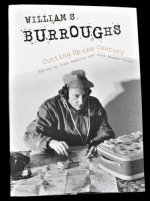Maybe it's the tape experiments above all that Burroughs was doing around that time that really pushed him forward to another stage that we're only just catching up with.
They're apparently a focus of
The Ticket That Exploded. I've got a copy hopefully arriving tomorrow, so will report back.
This looks potentially interesting, but I'm wary of it being some dry academic thing that sucks all the life out of him.

William S. Burroughs's
Nova Trilogy (
The Soft Machine,
Nova Express, and
The Ticket That Exploded) remains the best-known of his textual cut-up creations, but he committed more than a decade of his life to searching out multimedia for use in works of collage. By cutting up, folding in, and splicing together newspapers, magazines, letters, book reviews, classical literature, audio recordings, photographs, and films, Burroughs created an eclectic and wide-ranging countercultural archive.
This collection includes previously unpublished work by Burroughs such as cut-ups of work written by his son, cut-ups of critical responses to his own work, collages on the Vietnam War and the Watergate scandal, excerpts from his dream journals, and some of the few diary entries that Burroughs wrote about his wife, Joan.
William S. Burroughs Cutting Up the Century also features original essays, interviews, and discussions by established Burroughs scholars, respected artists, and people who encountered Burroughs. The essays consider Burroughs from a range of perspectives--literary studies, media studies, popular culture, gender studies, post-colonialism, history, and geography.


